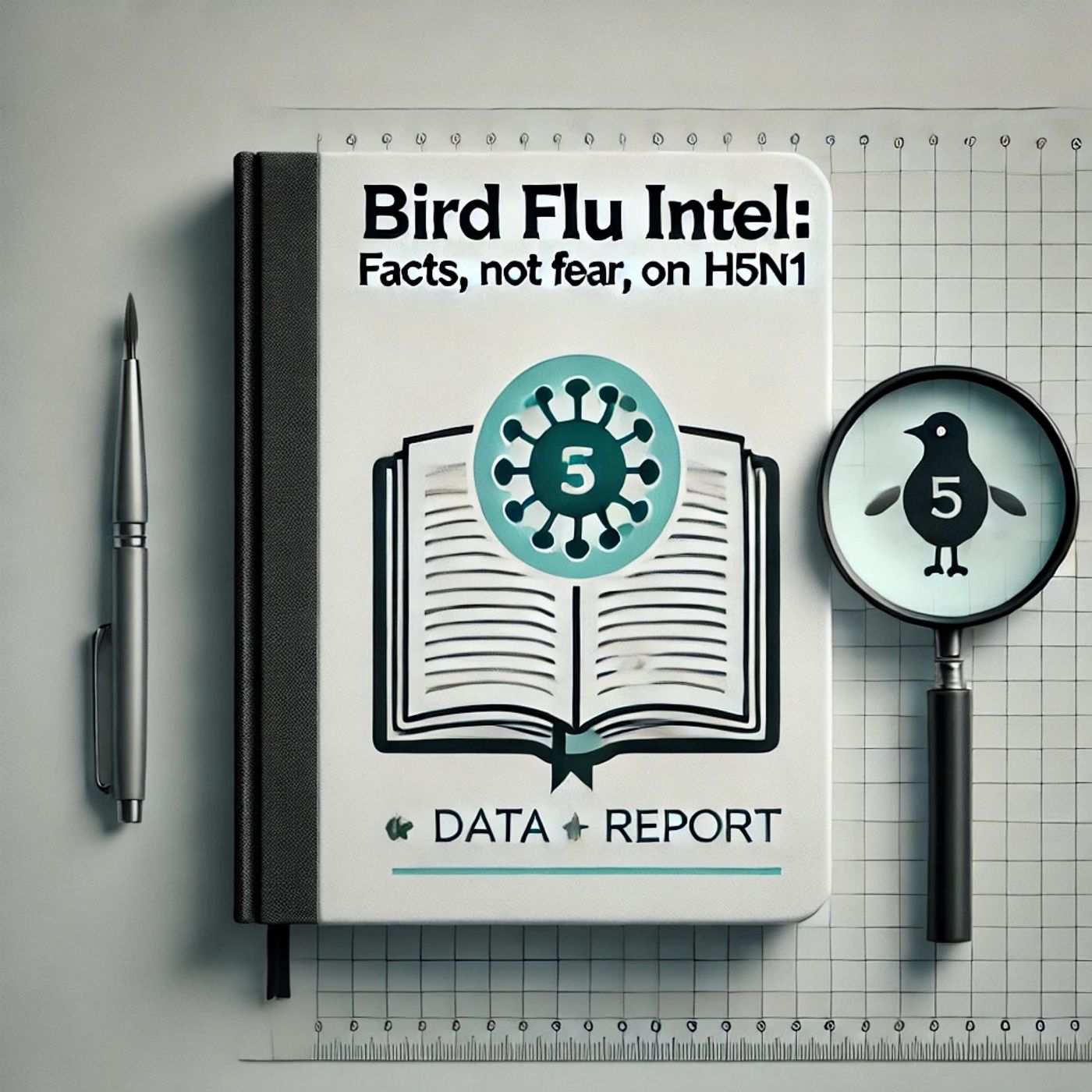Podcast Episode Details
Back to Podcast Episodes
H5N1 Bird Flu: Low Public Risk, Key Facts and Prevention Strategies from CDC and WHO Experts
Bird Flu Intel: Facts, Not Fear, on H5N1
Host:
Today we’re cutting through noise about H5N1 bird flu with facts you can use. The bottom line: risk to the general public remains low, while people with close contact to infected animals should take precautions. That’s according to the CDC’s August 4, 2025 global summary and the WHO’s July 2025 risk assessment.
Myth 1: H5N1 is spreading person-to-person in the U.S.
Reality: According to CDC, no person-to-person spread has been identified in recent global cases, and U.S. risk is assessed as low. The U.S. saw three cases in early 2025, with no new cases since mid-February; most recent global deaths involved direct contact with poultry or wild birds. WHO likewise rates risk to the general population as low, and low-to-moderate for those with occupational exposures.
Myth 2: If you eat chicken, eggs, or drink milk, you’ll get H5N1.
Reality: USDA and CDC state the virus is not a foodborne risk when products are properly handled and cooked; pasteurization inactivates influenza viruses in milk, and cooking poultry and eggs to safe temperatures kills the virus. The main risk is direct exposure to infected animals or contaminated environments, not eating properly prepared foods.
Myth 3: H5N1 has already become a pandemic strain.
Reality: CDC explains avian influenza viruses could cause a pandemic if they adapt to spread efficiently among people—but current evidence does not show sustained human-to-human transmission. That’s why every human infection is investigated quickly and surveillance remains intense.
Myth 4: Only birds are affected.
Reality: USDA APHIS reports H5N1 is widespread in wild birds and has caused outbreaks in U.S. domestic birds and dairy cattle, with sporadic infections in other mammals. This cross-species spread is concerning, but it has not translated into efficient spread among people.
Current consensus
- Risk to the general public in the U.S. is low, per CDC; WHO’s global assessment is also low for the general public.
- Most human infections occur after direct contact with infected animals or contaminated environments.
- Surveillance is robust: CDC integrates H5 data into routine flu systems; USDA runs extensive animal testing and biosecurity programs.
- Vaccines and antivirals: Seasonal flu vaccines don’t protect against H5N1, but candidate vaccine viruses exist; neuraminidase inhibitors (like oseltamivir) are expected to work if given early, per CDC guidance.
Where uncertainty remains
- Viral evolution: Ongoing mutations could change transmissibility or severity; that’s being monitored through genetic sequencing.
- Mammal-to-mammal transmission dynamics, especially in cattle and some wildlife, need further study.
- True infection rates in people with mild or no symptoms may be underdetected without broader testing.
How misinformation spreads—and why it’s harmful
- Algorithms reward sensational claims, while early scientific signals are often preliminary. Misinterpretations of single-case reports, lab preprints, or out-of-context statistics can fuel panic or complacency.
- Harm includes stigma toward farmers, unsafe behaviors like consuming raw milk, and erosion of trust in public health—undermining real prevention.
Tools to evaluate information quality
- Check provenance: Is it from CDC, WHO, or USDA? Cross-check claims across these sources.
- Look for specifics: dates, locations, exposure types, and whether human-to-human spread is documented.
- Beware of absolutes: “zero risk” or “guaranteed pandemic” are red flags.
- Prefer consensus summaries and updates over isolated anecdotes or screenshots.
Practical takeaways
- If you work with birds or dairy cattle, use protective equipment, avoid direct contact with sick or dead animals, and follow local testing and report
Published on 1 week, 5 days ago